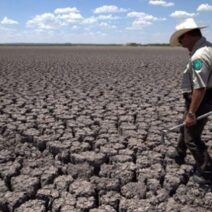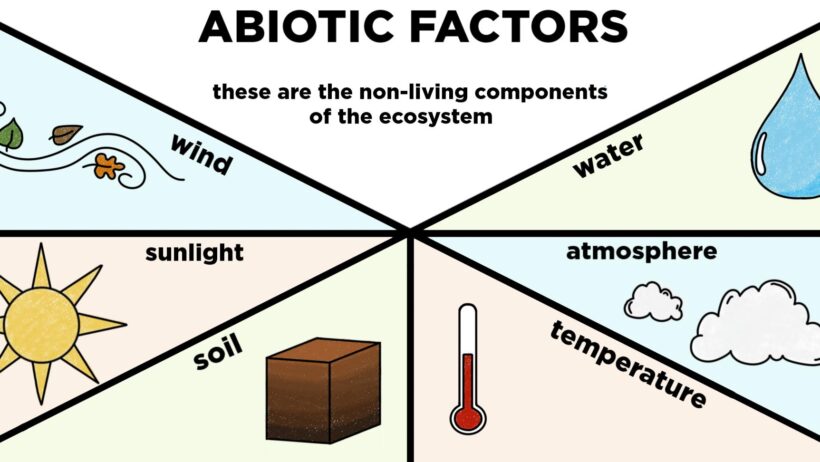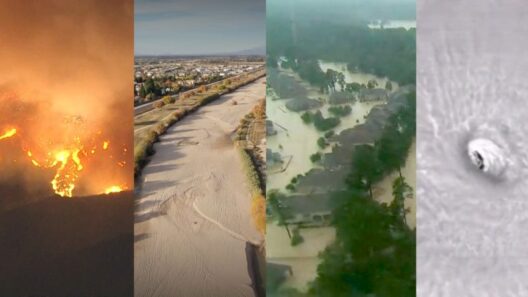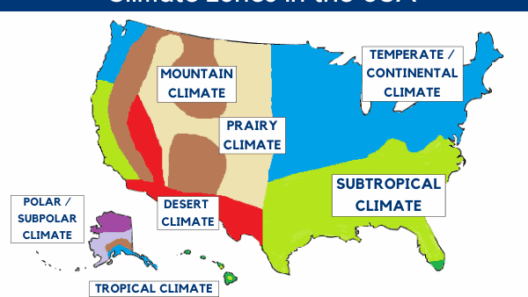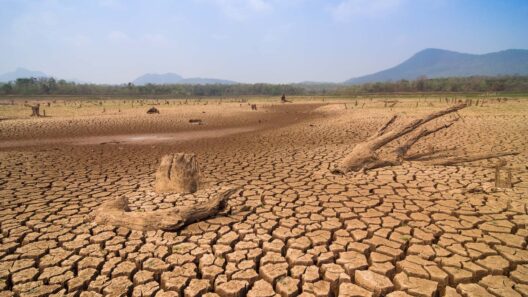Desert biomes, often characterized by their arid conditions, may seem desolate at first glance, but they hold an intricate tapestry of life and are shaped by distinct abiotic factors. These factors govern not only the survival of organisms in these extremes but also the expansive landscapes that define them. This exploration seeks to unravel the various elements that contribute to the climate of desert biomes, highlighting why they captivate the imagination of scientists and nature enthusiasts alike.
Understanding Desert Biomes
Desert biomes are defined primarily by their low precipitation levels, typically receiving less than 25 centimeters (around 10 inches) of rain annually. They tally a variety of temperatures, ranging from blistering heat during the day to frigid lows at night. The dunes of the Sahara, the rocky expanses of the Mojave, and the unique flora of the Sonoran Desert exemplify the diversity within these seemingly barren landscapes. This dynamic range is a key element that evokes fascination, proving that life finds a way even in the harshest of environments.
1. Sunlight: The Driving Force
Sunlight plays an indispensable role in shaping desert climates. The intensity of solar radiation in these regions is profound due to the lack of cloud cover. Unlike temperate biomes, where clouds and vegetation can moderate temperatures, deserts experience an influx of solar energy that leads to extreme daytime temperatures. This phenomenon not only defines the thermal landscape but also influences the behavioral adaptations of the flora and fauna that thrive here.
For instance, plants in desert environments have evolved remarkable strategies to cope with this relentless sun. Succulents, such as cacti, store water in their tissues, allowing them to endure prolonged dry spells. Additionally, the orientation and leaf structure of these plants are adapted to minimize surface area exposure to sunlight, reducing the risk of water loss. Such evolutionary traits exemplify how sunlight is a paramount abiotic factor, influencing not just climate but also the evolution of life itself.
2. Temperature Variability
Temperature extremes are another defining characteristic of desert biomes. The diurnal temperature variation in many deserts can be staggering, with daytime highs soaring above 38°C (100°F) and nighttime lows plummeting well below freezing. This significant temperature fluctuation is attributed to several factors, including the sparse vegetation cover that fails to retain heat during the night.
The adaptations of desert species in coping with these temperature extremes are varied and ingenious. Many animals, such as the kangaroo rat, have physiological mechanisms that allow them to maintain internal homeostasis. By remaining inactive during the hottest parts of the day and being nocturnal, these creatures dodge the heat stress that would otherwise impede their survival. Such adaptive behaviors illuminate a deeper understanding of the relationship between abiotic factors and organismal life in these ecosystems.
3. Soil Composition
The soil in desert biomes is often sandy, rocky, or clay-like, profoundly affecting water drainage and nutrient availability. This unique soil composition, combined with high evaporation rates, leads to a scarcity of nutrient-rich organic materials essential for most plant life. The struggle for survival among plant species in deserts illustrates a fascinating adaptation: many plants possess deep root systems that tap into underground water reserves, while others have extensive, shallow root systems that maximize surface absorption during rare rain events.
Moreover, the soil chemistry, often rich in salts due to minimal rainfall, can have detrimental effects on vegetation. Salt-accumulating plants, known as halophytes, have emerged as specialists of this harsh condition, adapting to thrive where others can barely survive. The synergy between soil composition and plant adaptation offers a profound insight into the delicate balance of desert ecosystems.
4. Precipitation Patterns
Another pivotal abiotic factor is precipitation, or, more accurately, the lack thereof. Desert biomes experience sporadic and unpredictable rainfall, which can render them extraordinarily dry for extended periods. This erratic precipitation is vital for shaping the living conditions in deserts; it determines the availability of water not just for organisms but also for the overall ecosystem structure.
The impact of sporadic precipitation extends beyond immediate water needs. The timing and quantity of rainfall can drive seasonal migration patterns for animal species and influence plant flowering and seed germination cycles. Some plants remain dormant, triggering their lifecycle only in response to specific environmental cues that signal the arrival of moisture. This intricate dance of life in response to water availability exemplifies the complex interplay of abiotic factors within desert climates.
5. Wind Patterns
Wind also plays a significant role in shaping the desert landscape. This abiotic factor influences everything from sand dune formation to microclimates within the biome. High winds can erode rocks and transport sand, sculpting the terrain into distinctive features. The relentless winds often exacerbate the aridity of the environment by increasing evaporation rates, which further complicates the struggle for survival among desert dwellers.
These wind patterns can also significantly affect temperature distribution within deserts, creating localized microhabitats where organisms might find refuge from extreme temperatures. Understanding the dynamics of wind in deserts not only reveals the physical changes in the landscape but also highlights additional mechanisms that organisms employ to adapt to their challenging environment.
Conclusion: The Fascination with Desert Biomes
Desert biomes, with their blend of harsh conditions and surprising life forms, epitomize nature’s incredible resilience. The abiotic factors of sunlight, temperature, soil composition, precipitation, and wind collectively create a unique climate that challenges the limits of life. This complexity fuels curiosity, prompting a deeper inquiry into the adaptive mechanisms of the inhabitants and their interplay with the environment. By studying desert biomes, we not only gain insights into a distinct ecosystem but also unravel broader ecological principles that govern the health of our planet as a whole.

